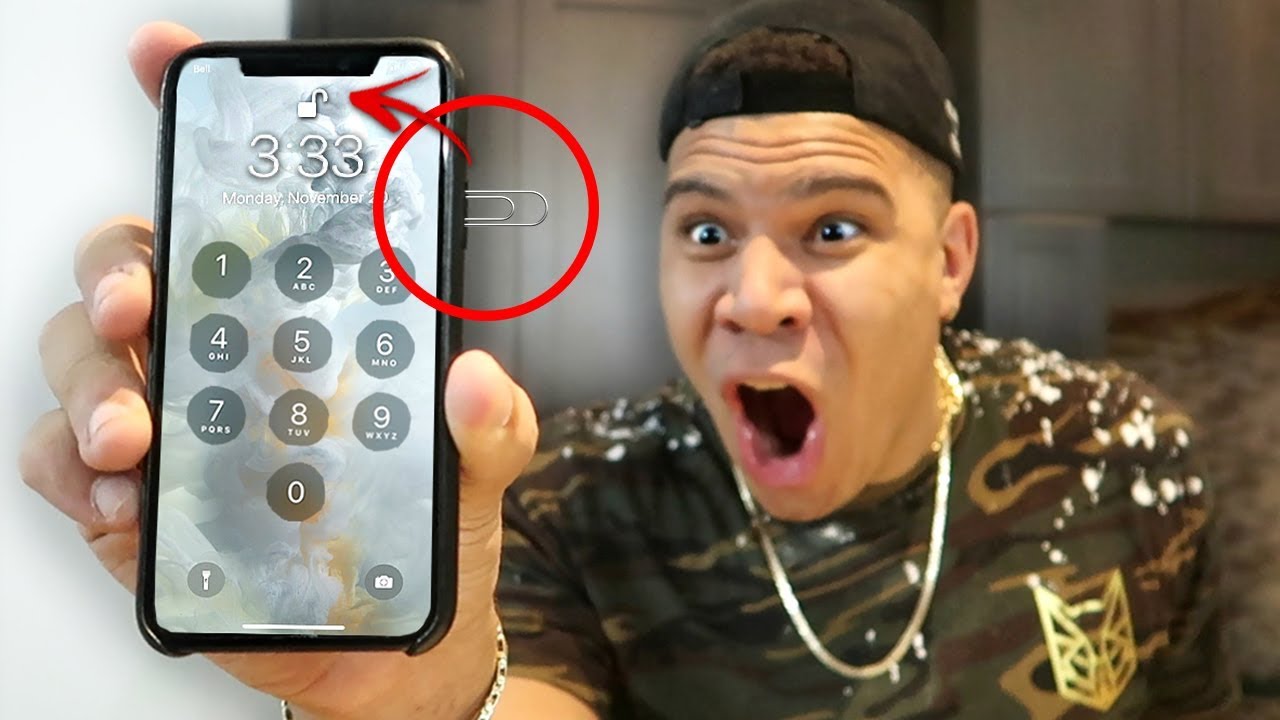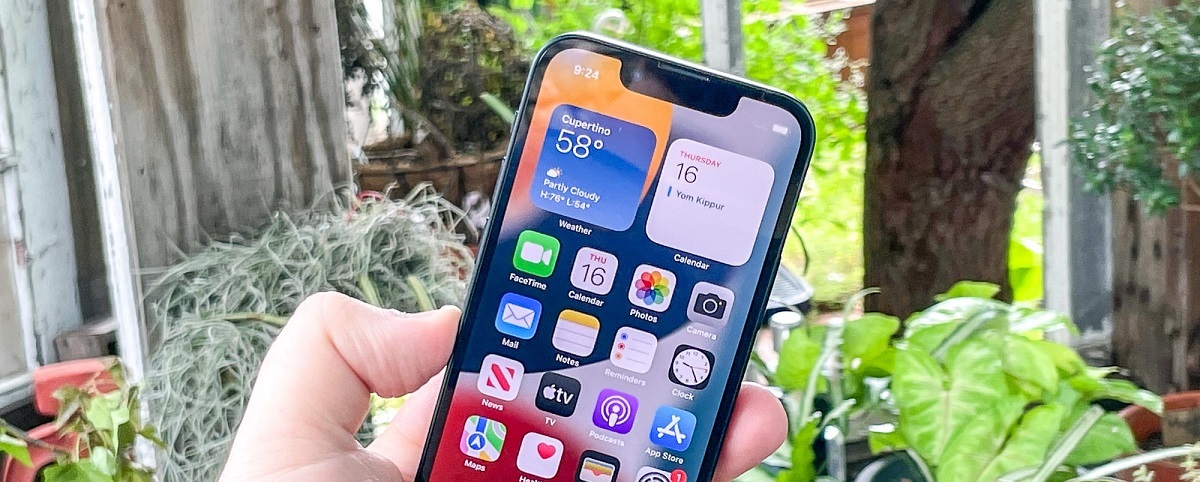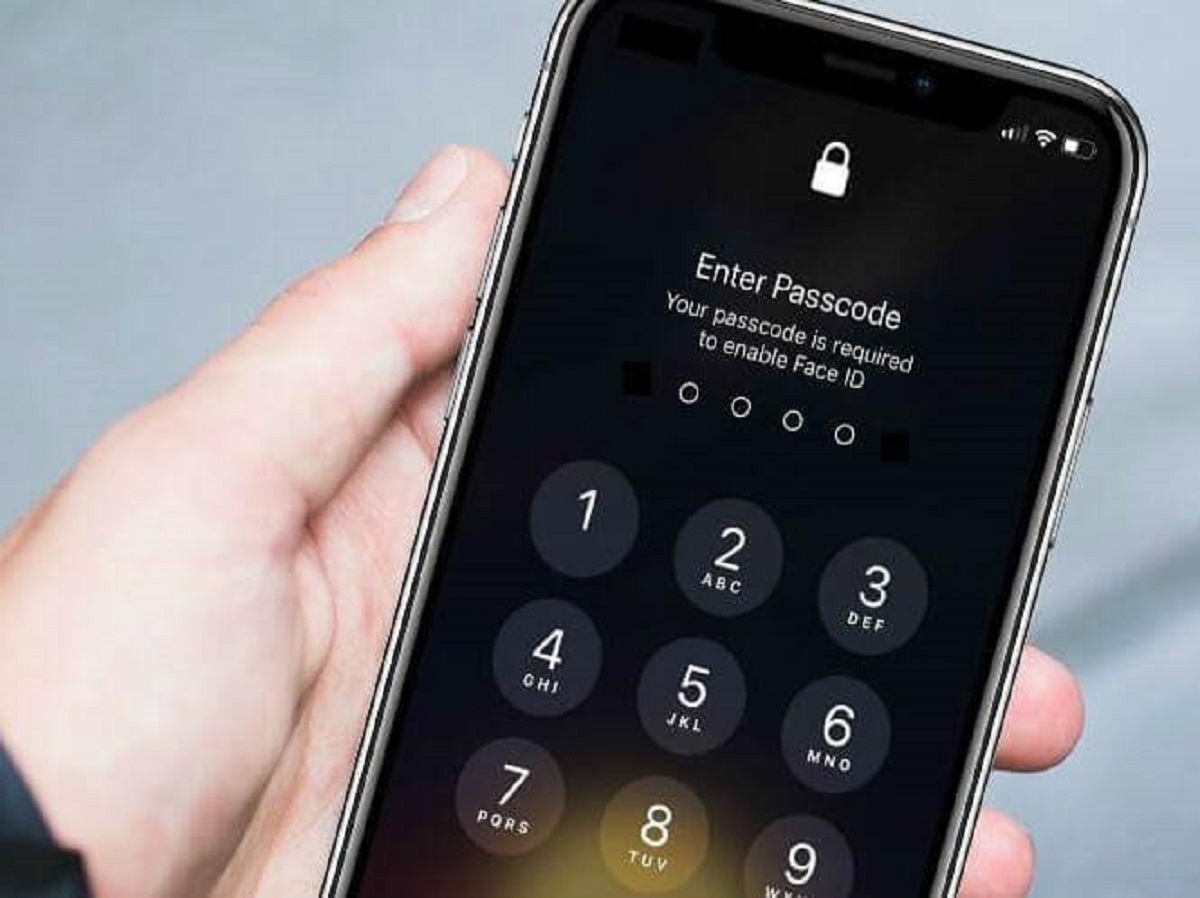Introduction
With the advent of advanced biometric technologies, smartphone security has entered a new era. One such innovation is Face ID, a facial recognition system introduced by Apple. Face ID offers a convenient and secure way to unlock your iPhone, make secure payments, and access sensitive data.
However, as with any technology, there are always tricks and workarounds. Whether you’re curious about testing the limitations of Face ID or you find yourself in a situation where you need to bypass it, understanding the methods available to trick Face ID can be valuable knowledge.
In this article, we will explore various techniques to deceive Face ID, enabling you to gain access to a locked iPhone. It is important to note that attempting these tricks may be against Apple’s terms of service and could potentially violate local laws regarding device security. This information is purely educational and should not be used for any malicious purposes.
Before diving into the methods, let’s briefly explore how Face ID technology works to provide a baseline understanding.
Understanding Face ID Technology
Face ID is Apple’s facial recognition technology that utilizes the TrueDepth camera system, which is located at the top of newer iPhone models. This system projects and analyzes over 30,000 invisible dots onto the user’s face to create a detailed depth map. It then compares this depth map to the one stored during the initial setup to verify the user’s identity.
Face ID uses various sensors, including an infrared camera, flood illuminator, and dot projector, to capture and analyze the facial features of the user. It creates a mathematical representation of the face, mapping out unique features such as the distance between the eyes, shape of the nose, and contours of the face.
One of the key features of Face ID is its ability to adapt and recognize changes in the user’s appearance. It employs advanced machine learning algorithms to continually update and improve its facial recognition capabilities. This means that even if the user grows a beard, wears glasses, or changes their hairstyle, Face ID has the ability to adapt and still accurately identify the user.
Additionally, Face ID incorporates attention detection to enhance security. The technology ensures that the user is actively looking at the device before granting access. This prevents unauthorized access if someone tries to unlock the device by pointing it at the user’s face while they are sleeping or not paying attention.
It’s important to note that Face ID is designed to protect against spoofing attempts. It uses depth mapping and infrared technology to differentiate between an actual face and a photo or mask. This adds an extra layer of security and mitigates the risk of using static images to deceive Face ID.
Now that we have a basic understanding of how Face ID technology works, let’s explore some tricks and techniques to bypass it.
Tricks to Bypass Face ID
While Face ID is designed to be highly secure and reliable, there are some tricks and methods that have been discovered to bypass this facial recognition technology. It is important to note that these tricks are not foolproof and may not work in every situation. Furthermore, attempting these methods may violate Apple’s terms of service and local laws, so proceed with caution and use them responsibly.
Let’s take a look at some of the known tricks to bypass Face ID:
- Method 1: Alternate Appearance: Face ID allows users to set an “Alternate Appearance,” which can be used as an additional face for authentication. By creating a new appearance that is significantly different from your usual appearance, such as wearing heavy makeup or using prosthetics, you may be able to trick Face ID into recognizing the alternate appearance and granting access.
- Method 2: Attention Detection: Face ID relies on the user’s attention as an additional layer of security. However, by covering one eye or diverting your gaze away from the device while attempting to unlock, you may be able to fool Face ID into thinking you’re not actively looking, thereby bypassing the attention detection feature.
- Method 3: Using an Identical Twin: Since Face ID is based on facial features, an identical twin may be able to unlock your device by simply using their face. This method obviously requires having an identical twin and, like other methods, may have limitations depending on the level of similarity between the twins.
- Method 4: Opting for Passcode Authentication: If all else fails, you can always opt for passcode authentication as an alternative to Face ID. This method provides a reliable and secure way to unlock your device without relying on biometric recognition. Remember to choose a strong passcode to ensure the security of your device.
It is worth mentioning that these tricks are not intended to encourage unauthorized access or unethical behavior. They are merely explorations of the limitations and vulnerabilities of Face ID for educational and informational purposes.
However, it is crucial to respect the privacy and security of others, and not to use these tricks to gain unauthorized access to someone else’s device or private information.
In the next section, we will discuss potential risks and considerations associated with attempting to trick Face ID.
Method 1: Alternate Appearance
One trick to potentially bypass Face ID is by utilizing the “Alternate Appearance” feature. Apple allows users to set up an alternative appearance that can be used for facial recognition authentication. This feature was primarily designed to accommodate changes in one’s appearance over time, such as growing a beard or wearing different hairstyles.
By deliberately altering your appearance in a significant way, such as wearing heavy makeup, using prosthetic enhancements, or even altering your hairstyle, you may be able to trick Face ID into recognizing the alternate appearance as a valid match.
Here’s how you can set up an alternate appearance on your iPhone:
- Open the “Settings” app on your iPhone.
- Select “Face ID & Passcode.”
- Enter your device passcode to proceed.
- Tap on “Set Up an Alternate Appearance.”
- Follow the on-screen instructions to register your alternate appearance.
Once the alternate appearance is set up, you can test if Face ID recognizes it by attempting to unlock your device with the altered appearance. Keep in mind that the effectiveness of this method may vary depending on the extent of the alterations you make and the accuracy of Face ID’s recognition.
It is important to note that relying on an alternate appearance may introduce some limitations and risks. If you primarily use Face ID with your regular appearance and then switch to the alternate appearance, Face ID may become less accurate and may fail to unlock your device consistently. Additionally, if someone else gains access to your alternate appearance, they may be able to unlock your device as well.
Furthermore, using the alternate appearance feature should be approached with caution and used responsibly. Attempting to deceive Face ID for malicious purposes or unauthorized access is a violation of Apple’s terms of service and local laws related to device security and privacy.
While exploiting the alternate appearance feature can potentially bypass Face ID in certain scenarios, it is important to remember that Apple continuously updates and improves their technology. Therefore, this method may not always be effective, and it is possible that future software updates may further enhance Face ID’s recognition capabilities.
Now, let’s move on to the next method of bypassing Face ID: attention detection.
Method 2: Attention Detection
Face ID includes an attention detection feature, which ensures that the user is actively looking at the device before granting access. This feature adds an extra layer of security to prevent unauthorized access when the user is not actively engaged with their device.
To bypass Face ID’s attention detection, you can try diverting your gaze away from the device or covering one eye while attempting to unlock it. By doing so, you may trick Face ID into thinking that you are not actively looking at the screen, allowing you to unlock the device without requiring your attention.
It’s important to note that attention detection is designed to enhance security and prevent unauthorized access attempts. By requiring the user’s attention, Face ID mitigates the risk of someone trying to unlock the device by pointing it at their face while they are unaware or asleep.
However, attention detection has its limitations. In certain circumstances, such as when in a low-light environment or when wearing sunglasses or a hat that obstructs the view of your eyes, Face ID may not accurately detect your attention. This creates an opportunity to potentially bypass the attention detection feature.
It’s worth mentioning that attention detection is an essential security measure and disabling or bypassing it may weaken the overall security of your device. Apple has implemented this feature to protect user privacy and ensure that the device is being accessed by an authorized person with active engagement.
While diverting your gaze or covering one eye may occasionally bypass attention detection, it’s important to note that the reliability and effectiveness of this method may vary. Apple constantly updates their software to improve Face ID’s performance, and future updates may further enhance the attention detection feature, making it more difficult to bypass.
Remember, attempting to deceive Face ID for malicious purposes or unauthorized access is strongly discouraged and may violate Apple’s terms of service. It is important to use this information responsibly and with respect for the privacy and security of others.
Now, let’s move on to the next method: using an identical twin to bypass Face ID.
Method 3: Using an Identical Twin
One intriguing method to potentially bypass Face ID is by involving an identical twin. Face ID is designed to recognize unique facial features to accurately authenticate the user, but it may face challenges when it comes to distinguishing between identical twins.
If you have an identical twin, there is a possibility that they can unlock your device by simply using their face, as Face ID may struggle to differentiate between the two individuals. This can be especially true if you and your twin have highly similar facial features and appearances.
It’s important to note that this method relies on the striking resemblance between identical twins. The higher the level of similarity, the more likely Face ID will be fooled into recognizing the twin’s face as the authorized user. However, it’s not guaranteed to work flawlessly and may still face limitations depending on the level of facial similarity.
It is worth mentioning that attempting to use your identical twin’s face to bypass Face ID may violate Apple’s terms of service and local laws pertaining to device security and privacy. Misusing this method for nefarious purposes or unauthorized access is strongly discouraged and should be avoided.
While using an identical twin can potentially bypass Face ID, it is important to consider the ethical implications and respect the privacy and security of others. It is always recommended to use biometric authentication methods responsibly and within legal boundaries.
It’s also essential to keep in mind that technology continually evolves, and companies like Apple regularly update their software to improve the accuracy and security of facial recognition systems. Future updates may enhance Face ID’s ability to distinguish between identical twins, making it more difficult to bypass using this method.
Now, let’s move on to the final method: opting for passcode authentication as an alternative to Face ID.
Method 4: Opting for Passcode Authentication
If you find yourself unable to bypass Face ID or if you prefer an alternative method of authentication, you can always opt for passcode authentication on your iPhone. Passcodes have been a reliable and secure means of unlocking devices for a long time, providing a fallback option when biometric authentication methods may not be feasible or preferred.
By setting up a strong passcode for your device, you can ensure that only those who know the passcode can gain access to your iPhone, regardless of whether Face ID is working or not. Passcodes are not reliant on physical appearances or environmental conditions, making them a versatile alternative for authentication.
Here’s how you can set up or change your passcode on your iPhone:
- Open the “Settings” app on your iPhone.
- Select “Face ID & Passcode.”
- Enter your device passcode to proceed.
- Tap on “Change Passcode” to set up a new passcode or modify an existing one.
- Follow the on-screen instructions to enter and confirm your new passcode.
It is important to choose a strong and unique passcode to ensure the security of your device. Avoid using easily guessable passcodes like birthdates or sequential numbers. Instead, opt for a combination of alphanumeric characters and symbols to create a robust passcode.
By relying on passcode authentication, you eliminate the need for biometric recognition, eliminating any potential vulnerabilities associated with it. However, it’s important to remember to keep your passcode confidential and not share it with others to maintain the security and privacy of your device.
While passcode authentication provides a reliable means of unlocking your device, it does require you to manually enter the passcode each time you want to access it. This can be slightly less convenient compared to the seamless experience provided by Face ID.
However, passcode authentication ensures a consistent and secure method of unlocking your device, regardless of external factors that may affect biometric recognition technologies. It serves as a trusted fallback option for those who prefer the familiarity and reliability of passcodes.
Now that we have explored the various methods to potentially bypass Face ID, let’s consider the potential risks and considerations associated with attempting to trick Face ID.
Potential Risks and Considerations
While it can be intriguing to explore ways to bypass Face ID, it is crucial to understand the potential risks and considerations involved. Attempting to trick or deceive Face ID may have unintended consequences and legal implications.
Here are some important factors to consider:
- Legal Concerns: Deliberately bypassing or attempting to deceive Face ID may violate Apple’s terms of service and local laws regarding device security, privacy, and unauthorized access. It is essential to use this information responsibly and within legal boundaries.
- Security Risks: Bypassing Face ID could compromise the security of your device and personal data. By circumventing the built-in security measures, you expose your iPhone to potential unauthorized access and increase the risk of data breaches.
- Inaccurate Authentication: By altering your appearance or diverting attention, you run the risk of Face ID failing to accurately authenticate your identity. This can result in frequent lockouts or unauthorized access attempts when your intended appearance or attention is not recognized.
- Software Updates: Apple regularly releases software updates to improve the performance and security of Face ID. These updates may consist of enhancements that make it more challenging to bypass the facial recognition system successfully.
- Ethical Considerations: It is crucial to respect the privacy and security of others. Attempting to gain unauthorized access to someone else’s device or using tricks to invade their privacy is ethically wrong and against proper usage of technology.
It’s important to remember that Face ID is designed to safeguard your device and personal information. It provides a robust and convenient authentication method, relying on advanced technologies to ensure secure access.
While understanding the vulnerabilities and limitations of Face ID can be valuable, it is essential to approach this knowledge responsibly and use it for educational purposes only.
Ultimately, the best practice is to utilize Face ID and other forms of authentication in a responsible manner, ensuring the security and privacy of your device and personal data.
With that said, let’s conclude our exploration of Face ID and the potential tricks and considerations associated with it.
Conclusion
Face ID is an advanced biometric technology introduced by Apple that provides convenient and secure authentication for iPhone users. While it offers robust security, there are tricks and methods that have been discovered to potentially bypass Face ID.
In this article, we explored various techniques to deceive Face ID, such as utilizing an alternate appearance, bypassing attention detection, involving an identical twin, and opting for passcode authentication. However, it is crucial to note that attempting these methods may violate Apple’s terms of service and local laws regarding device security and privacy.
It’s important to approach the information provided in this article responsibly and use it for educational purposes only. Attempting to deceive or bypass Face ID for malicious purposes or unauthorized access is strongly discouraged.
Understanding the limitations and vulnerabilities of Face ID can be valuable, as it helps users make informed decisions about their device security. However, it is essential to respect the privacy and security of others, and not to use these tricks to gain unauthorized access to someone else’s device or private information.
While these methods may provide temporary workarounds, it is crucial to remember that biometric technologies constantly evolve and are regularly updated to enhance their security. Apple, in particular, is committed to improving Face ID’s accuracy and robustness through software updates.
Ultimately, it is recommended to rely on the built-in security features provided by Apple, such as Face ID and passcode authentication, to safeguard your device and personal data. These technologies are designed to strike a balance between convenience and security.
By using Face ID and other authentication methods responsibly, users can ensure the privacy, security, and seamless user experience on their iPhones.
Remember, technology should be used ethically and responsibly to protect both our devices and the privacy of ourselves and others.

























